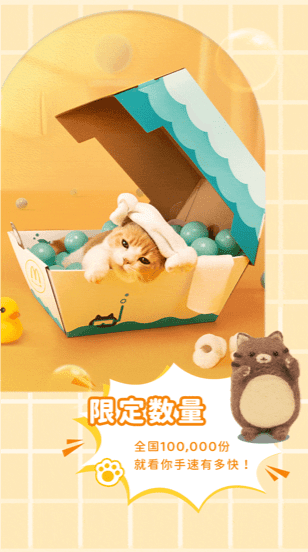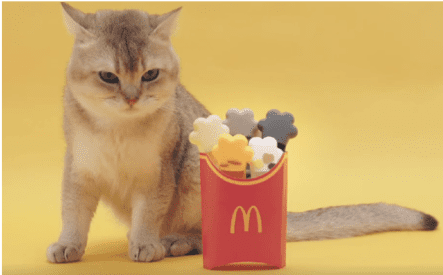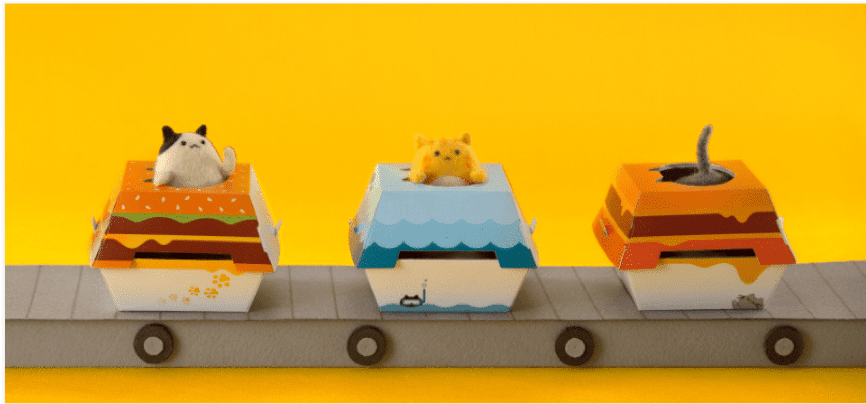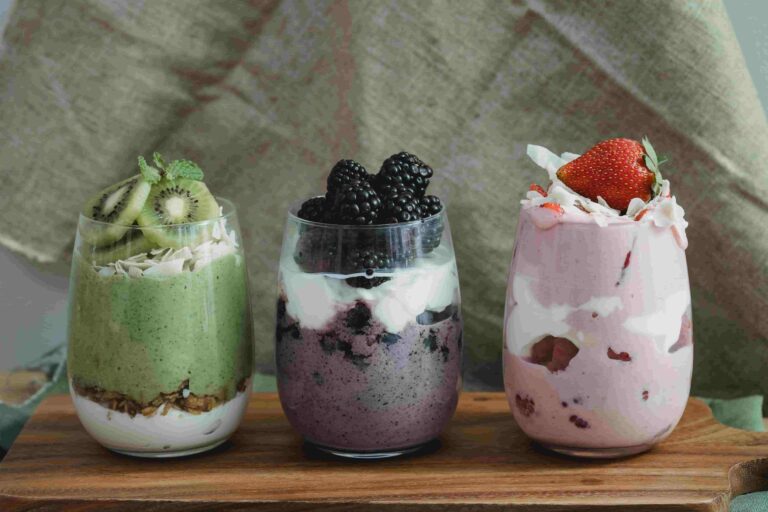On December 7th, McDonald’s released a limited-edition cat-sized burger box that drove cat-owners all over China crazy. The 100,000 cardboard cat houses were only gifted to customers who ordered the designated combo meals via McDelivery. Although the campaign was meant to last two weeks, the cat boxes sold out on the opening day of the campaign, causing the McDelivery app to temporarily shut down.
Inspired by McDonald’s big mac, cheeseburger, and fish filet burger, the giant cat box is shaped like the iconic burger box but has a hole on the top large enough for a cat to enter.

The catch was that the special edition box was only available through McDelivery and not offline stores, encouraging customers to order from McDelivery exclusively.

“Limited edition: Only 100,000 boxes in China, let’s see how fast your hands are!“
With this campaign, McDonald’s tapped into China’s booming pet economy. Pet owners have a strong willingness to pay to spoil their pets. Among these people, the young generations from the 80s and 90s are the primary target audience, accounting for about 74.3% of the overall pet crowd according to iResearch reports in 2020 China Pet Industry White Paper,
It comes without surprise that this campaign was a success. The hashtag ‘McDonald’s Cat House’ (#麦当劳猫窝# in Chinese) has attracted over 130 million views on Weibo. McDonald’s has been preparing for this campaign for several months. Not only did they handpick cat box materials but prior created Weibo tags to observe consumers’ reactions and collect feedback. This campaign is not McDonald’s first-time exploring cat peripherals. For example, last year’s cat’s paw-shaped mini tongs were also popular when launched.

This time around, McDonald’s used the limited-editing gift tactic to get cat owners to download their delivery app, but this strategy can be duplicated across other consumer groups and other industries.





